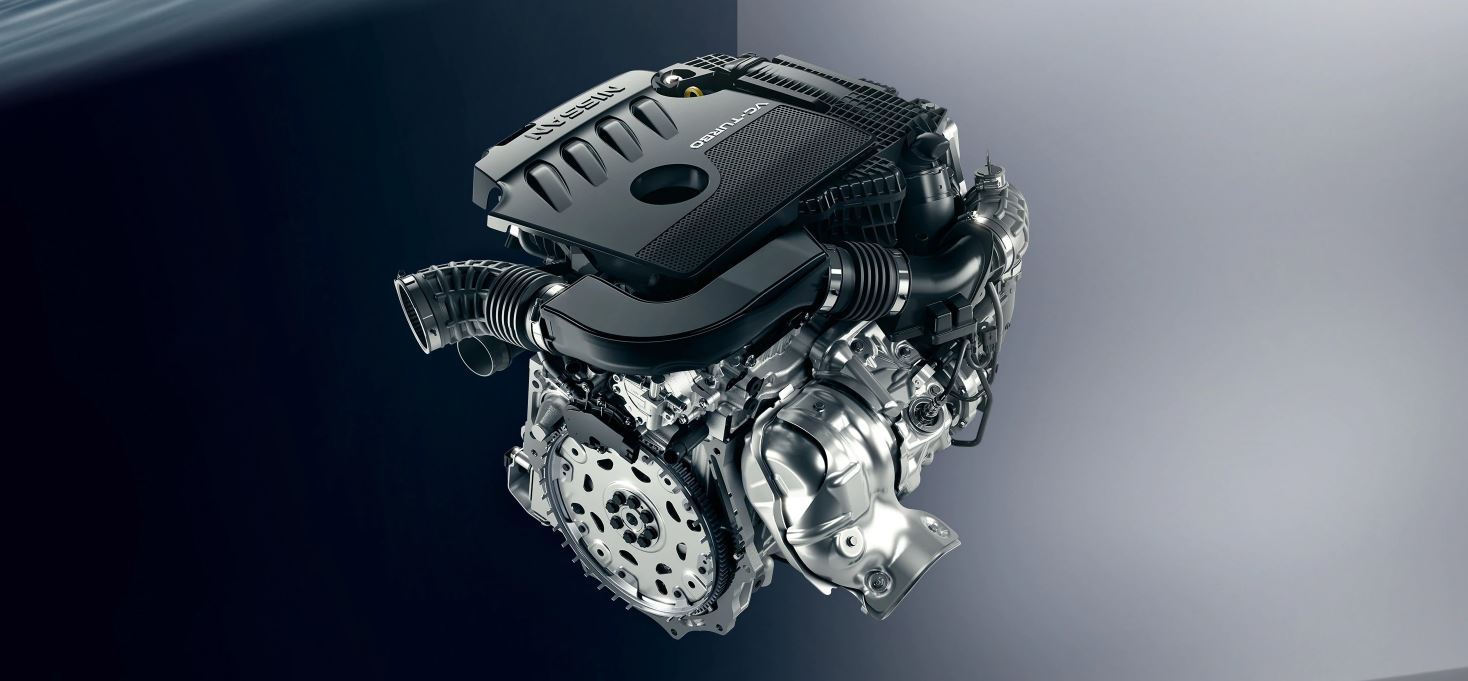
Nissan created the world’s first variable compression turbo engine and you can get it now at Nissan of Cool Springs in the 2019 Nissan Altima. The engine is an inline four-cylinder 2.0-liter engine that has the same performance as many V6 engines but with the fuel economy of a four-cylinder engine. The new engine, dubbed the VC-Turbo, has been in the works for 20 years. It will change compression ratios from 8:1, which is high performance, to 14:1, which is high efficiency. A multi-link system manufactured with high-carbon steel alloy changes the reach of the piston.
For higher performance, the piston doesn’t reach as high up in the cylinder. For higher efficiency, the piston almost reaches the bottom of the valve train — it reaches higher up in the cylinder. The lower compression ratio means more horsepower and torque. However, while the higher compression ratio lends to better efficiency, could create premature combustion, which is heard as a knocking if you ask too much of the engine. The variable compression reduces the compression for more power when you need it, thus eliminating the knocking problem.
How the VC-Turbo Compares
When compared with the 3.5-liter V6 that was in last year’s Altima, the VC-Turbo takes up less space in the engine bay, gets better gas mileage and makes 248 horsepower and 273 pound-feet of torque. It does require premium fuel. The 3.5-liter V6 made 270 horsepower and 251 pound-feet of torque and got 22 mpg in the city and 32 mpg on the highway. The VC-Turbo in a four-door Altima gets 25 mpg in the city and 34 mpg on the highway.
Understanding Compression in a Nutshell
Vehicles use a four-stroke engine. This means that each piston cycle has four strokes: Intake, compression, combustion and exhaust. The piston starts at the top of the cylinder (top dead center) and travels down the cylinder to bottom dead center. At that point, it is drawing in a mixture of fuel and air. That is the intake stroke.
As the piston starts traveling back up the cylinder, it is compressing the air and fuel mixture in the cylinder, making it more combustible. This is called the compression stroke. As the piston reaches about 20 degrees before top dead center — almost near the top of the cylinder — the spark plug ignites the mixture in the cylinder. The power from that ignition is what creates horsepower. The stronger the explosion, the more horsepower you have. This is also called the power stroke because the expanding gasses and explosion cause the piston to travel back down into the cylinder, away from the head. This force provides torque to the crankshaft and causes it to rotate. The stronger the force of the piston being pushed down, the more torque the engine has.
The fourth stroke is the exhaust stroke. What goes in must go out. The piston travels back up in the cylinder, but this time, the exhaust valves in the cylinder head are open. As the piston travels up, it pushes unused gas and air into the exhaust. Then the exhaust valves close, the intake valves open and the process starts all over again. No one cylinder is open at the same time as any other cylinder.
The VC-Turbo System
In a conventional engine, the piston is attached to the crankshaft with a connecting rod. In the VC-Turbo, U-Links, an actuator motor and an A-Link are used. The multiple links allow the computer to change the length of travel of the piston in the cylinder. On the compression stroke, the piston will travel farther for higher compression and better fuel efficiency. The Altima uses this while cruising. When you have to put your foot in it and get power, the computer senses this and tells the multi-link system that it needs less compression and more air and fuel for more power. The system lowers the compression ratio via the amount of travel of the piston in the cylinder.
Visit Nissan of Cool Springs
Stop by Nissan of Cool Springs today to be test drive the new 2019 Nissan Altima with the new VC-Turbo engine.